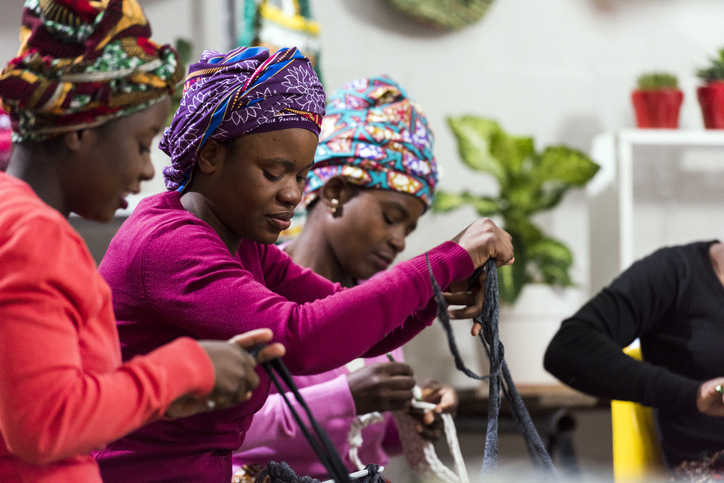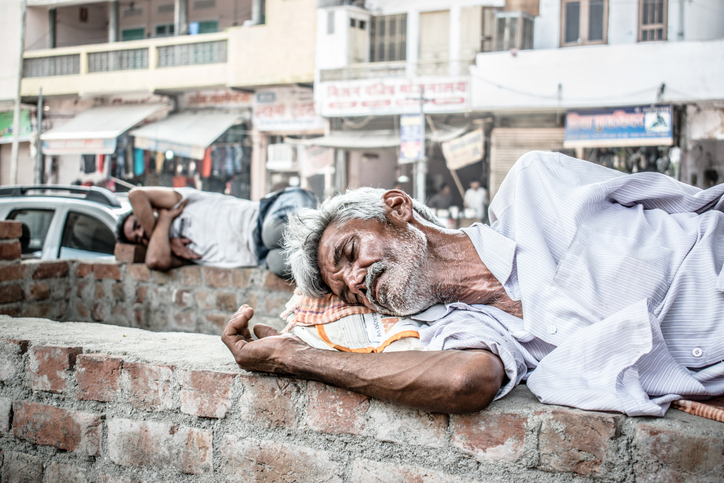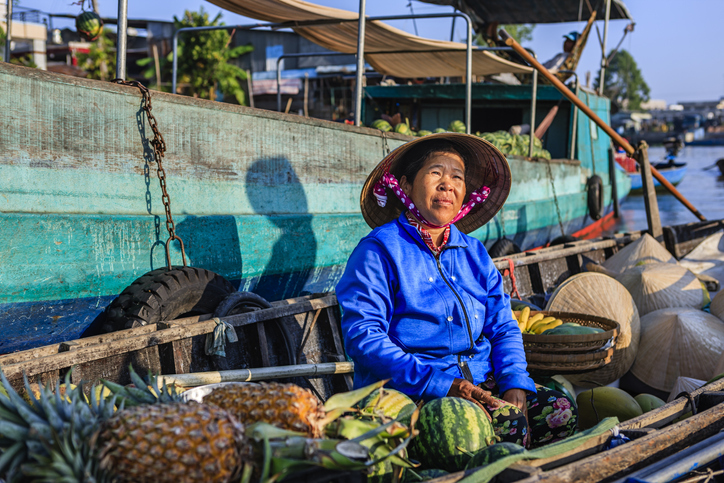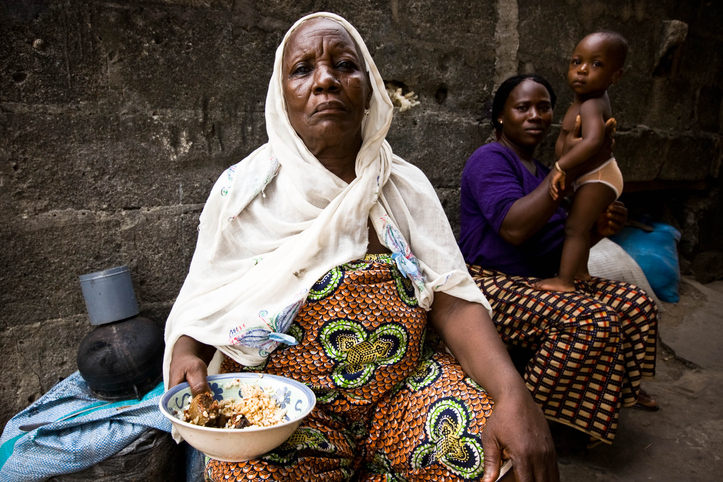For Rohingya refugees living in the Cox’s Bazar area of Bangladesh, the only access to cooking fuel has been the national forest beside which they have been forced to settle. But as this column reports, with deforestation and desertification, local people are now even more vulnerable to the dangers of mudslides, flooding, and cyclones. In addition to emergency humanitarian aid, it is essential to find ways to prevent further degradation and, if possible, to restore the environmental quality within and outside the refugee camps.
In May 2017, my friend Imran and I were looking for elephants in the lush Teknaf National Forest in southeastern Bangladesh near the border with Myanmar. I only had a tiny sliver of hope that we would spot elephants, but the forest was a cool escape from the sticky-hot, sun-baked refugee camp we had been traversing for days. The tropical trees blocked out the fierce sun, and the forest was alive with birdsong, trickling streams, and the sound of machetes against wood.
‘This forest will be gone soon’, Imran said. He had witnessed the forest’s slow decline since he arrived in the camps 25 years ago as a toddler refugee from Myanmar. ‘Everyone is trying to cook their food with the forest. There is no other choice.’
I had a hard time believing that the forest would disappear, even though at that time there were nearly 300,000 Rohingya living in stateless limbo in Bangladesh – some for up to 40 years – refugees without access to alternative fuels, such as the propane tanks or animal manure used by the local Bangladeshi community. The forest seemed inexhaustible, but the steady rhythm of chopping reverberating all around us from the wood gatherers hidden by the leaves was ominous.
Now the lush forest is gone, replaced by pitted, yellow, rolling hills where even the tree roots have been dug out for firewood. The birds are gone, the elephants pushed to some remote space, occasionally stumbling into the camps at night, trampling and killing camp dwellers.
Imran’s dire prediction came true even faster than he could have imagined. In August 2017, 700,000 Rohingya fled the gruesome uptick in long-term violence in neighboring Myanmar, violence that has displaced more than one million Rohingya since the 1970s. This last wave was by far the largest, and it has finally propelled this protracted refugee situation into the global media.
The steep hills and mesas are covered with small bamboo and plastic huts stretching for 3,000 square kilometers in the expansive Rohingya refugee ‘mega camp’ in southeastern Bangladesh. The world’s fastest-growing refugee camp houses almost one million people and looks like a Mad Max movie set: masses of people lugging firewood and huge tree roots, bags of rice, water jugs, babies, and bamboo poles navigating twisting footpaths with sharp drop-offs. The footpaths lace a dusty moonscape that is occasionally spiked with 100-foot well drilling structures crawling with young Bangladeshi workers.
There were only a couple of tightly controlled non-governmental organizations (NGOs) working in the camps when I visited in May 2017. Healthcare services were limited, food aid was scarce or non-existent for some, and the long-term refugee residents constantly worked to adapt to a stagnant precariousness of statelessness, fueled by restrictions on livelihoods, mobility, education and access to healthcare.
Just three months later in August 2017 – when there was still no comprehensive plan for providing large-scale amounts of cooking fuel, cooked foods, or work for the now one million refugees – the forest had disappeared.
The rapid deforestation and current desertification not only complicates efforts to feed and protect almost a million people – 70% of whom are women and children with more limited mobility and economic means than Rohingya men – but it has also increased the vulnerability of the impoverished local Bangladeshi community.
The host community and long-term Rohingya residents are not strangers to extreme climatic events such as cyclones, monsoons, and flooding that batter the Bay of Bengal coast, a particularly precarious region in a country known for both its vulnerability and adaptability to climate change. In May 2017, Cyclone Mora prompted evacuation of more than 300,000 people, killed at least six people and destroyed 20,000 Rohingya camp dwellings when it hit the low-lying Cox’s Bazar area.
In May 2016, Cyclone Roanu prompted the evacuation of 500,000 residents and killed at least 24 people. One big difference for the upcoming cyclone season is the deadly landslide and flood risk that has been exacerbated by the lack of trees and even tree roots on the hilly landscape, a landscape that has served as a highland refuge for both Rohingya and host community residents.
‘We used to take shelter in the forest during storms and floods. Now it’s gone,’ said a Rohingya woman who has been living in the low-lying Kutupalong camp since 2005. She reported that without access to work, it has been difficult for her to move herself, her teenage daughter, and two young sons out of the camp during storms. Now with even tighter controls on Rohingya movement, increased military and police presence in the camps, and without the forest to retreat to, she said she doesn’t know where to go if and when another cyclone hits.
The coping and adaptation strategies of some of the most vulnerable Rohingya and Bangladeshi residents in the Cox’s Bazar area have been ambushed not by the fact that the trees have been cut down, but because for decades, Bangladeshi government officials have not fully addressed the environmental effects of concentrating hundreds of people into an environmentally fragile area also inhabited by an impoverished host community.
The Rohingya and their Bangladeshi neighbors are not inherently vulnerable: their very survival depends on a continuously adapting resilience to a formidable combination of environmental, political, and economic challenges that few others could survive.
But their vulnerability has been exacerbated by the actions (or lack of actions) of a range of government and non-governmental authorities that reach beyond the Bangladeshi government. These include large donor countries such as Canada, the United States, and other regional powers like India and China, who have not pushed for more sustainable solutions to the protracted refugee situation in Bangladesh.
Although deforestation has been a relatively slow process over the decades, the recent international focus on the Rohingya camps has prompted environmental experts to revisit the long-term impacts of concentrating refugees in this environmentally fragile area. Experts from the International Center for Climate Change and Development, a leading Dhaka-based research institution focused on climate change research in Bangladesh and abroad, have proposed a long-term environmental impact project to assess and monitor degradation in the Cox’s Bazar area.
The nine-month project will identify changes to the environment and how to prevent further degradation, and if possible, restore the environmental quality within and outside the Rohingya camps. The project will be led by Bangladeshi experts in climate change, water quality, and deforestation, and it will have a focus on gender since 17% of households in the camps are headed by women.
A key aspect of this project is that it will examine the impacts on households outside the camp who have also been affected by deforestation and coastal climate change. It will also consider the effects of one million Rohingya settling in the area as well as the thousands of NGO staff, journalists and visitors to the area who have increased traffic, housing and food prices, and affected local livelihoods.
This long-term development project led by local research experts is a crucial addition to the ‘emergency response’ and humanitarian aid efforts, which are focused on immediate needs such as food security, nutrition, protection, and shelter.






